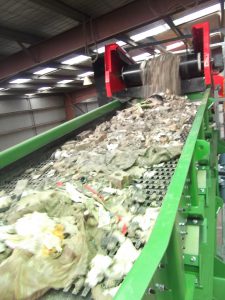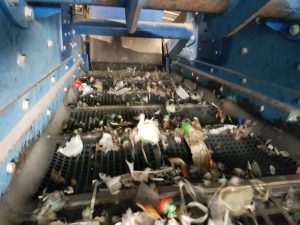
Screening product in the recycling industry is a challenge due to the high variety in material types. Variance in particle sizes, moisture levels and shapes makes choosing the correct recycling vibrating screens challenging.
From our experience, woven wire mesh tends to bind in this industry and is rarely used. It is preferred to use:
Choosing the best drive system for a recycling vibrating screen will vary depending on the application. For heavy primary screens, twin mass systems are required to allow a unit enough size to process the large material. However, due to sticky and oddly shaped product, direct drive units can provide a safer operation.
In glass recycling systems, oscillating mounts are avoided due to the abrasive dust that can wear the rubber. Steel coil springs can be a safer alternative but we have seen material stick between the coils and jam. Oscillating mounts are generally used in sorting facilities to avoid vibration passing to sub-structures where manual sorters operate.

Liners are generally poly or a variant of for most equipment. This is because of the low friction coefficient which promotes material flow. Bisalloy or other steel liners are used in the cases of primary sizing screens. Cermic liners do provide a happy medium between wear and material flow on recycling vibrating screens.
Construction materials in most cases are mild steel unless there is significant moisture discharged from the waste. In this case the troughs are built from stainless steel.
